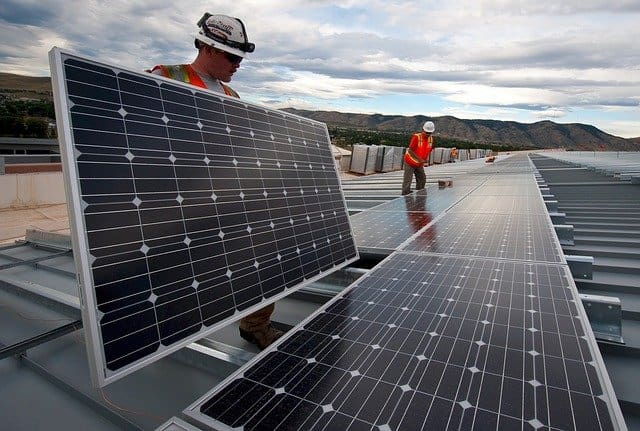This is the article that discusses more how human life shall impact due to the negative effects of nuclear weapons. In earlier articles, we have seen what nature has given us everything to have basic life and how renewable energy is an alternative option to human using energy resources.
This is the article that discusses more how human life is going to be in trouble in the coming years. And what can be the contribution of nuclear weapons in this unneeded catastrophic nuclear event?
I have researched a lot to understand the negative effects of nuclear energy, this is not something we can hear and forget, definitely, we are part of this technological growth of these countries on the earth, we are not alone. We can be affected as much the people affected by nuclear weapons in Japan.
How dangerous are nuclear weapons?
Nuclear weapons can be very dangerous as one can expect, the power of nuclear explosions is thousands of times more powerful than the conventional explosions.
Normally, an explosion will have light, heat and the shock (burst), but the power with which nuclear weapon explodes is many times greater and powerful than any other explosions. Normally, light and heat energy referred as Thermal energy.
The total amount of energy after the nuclear explosion comes out is almost between 80 to 90 percent. Out of which Thermal energy is 30 to 40 percent. The remaining energy is blast energy which is about 40 to 50 percent. The remaining 10 percent will be the severe nuclear radiation that would stay for a long time in the area of the explosion.
The amount of explosive energy released from the nuclear energy is called as yield. The yield is nothing but TNT. 1 megaton weapon would have the energy equivalent of 1 million tons of TNT and 1 kilotons of nuclear weapon produce 1 kiloton of TNT.
In normal words, the destruction of nuclear 1 bomb of 1 megatons of TNT can affect up to 80 kilometers. That is a large area.
The effects of instantaneous blast energy
The energy released immediately after the blast is a really huge amount which is about 40 to 50 percent of the total energy that the explosive possibly release.
The instantaneous effect is mostly due to the sudden shock or the burst produced immediately after the explosion. There will also be the decrease of oxygen percentage which leads to death.
The powers of wind after the explosion can travel with a speed of 300m/s. The exact effects and causes depend on the yield of the nuclear explosive. But, there can definitely be a lot of damage in terms of wealth and life.
If we consider the nuclear bomb dropped by the US in Japan, we can see how dangerous a nuclear weapon can be. Blast energy caused sudden death of the people in that area. All the buildings and towers were collapsed within no time in a half mile range.
In the case of Japan, many of the people were stuck in the tall buildings and after the incident. It was very difficult to recognize dead bodies.
The energy that released was not equal to the conventional bombing, so the effect was much more than they thought at that period of time.
Due to the extensive heat released from the blast, people those who have survived were hospitalized because of the radiation effect on them.
This is not definitely the kind of relationship we want between the countries if we look at Japan and US. We need more strong and business-oriented relationships that can help people live in good living conditions.
The effects of the thermal energy
The temperature after the nuclear explosion will increase to the temperature equals to the sun’s core i.e some million centigrade.
The main hazards are the eye and skin injuries. Due to the flash produced by the explosion, there can be temporary blindness. Severity can be the untreatable eye damage.
There will be huge chances of fires due to the thermal radiation, the effects of the thermal energy released will be more than the blast energy. The thermal energy effect may not be instantaneous but it is more slow and effective than blast energy. The thermal energy is almost 30 to 40 percent of the total energy released from the nuclear explosive.
Generally, when this radiation hits an object, part of it will be reflected, a part will be transmitted, and the rest of it is absorbed. The little amount that is absorbed depends on the nature and color of the material. A thin material may transmit a lot. A light-colored object will reflect much of the incident radiation and escapes from damage and harm.
The absorbed radiation raises the temperature of the surface and results in charring, scorching, and burning of paper, wood, fabrics, etc. If the material is a poor thermal conductor, the heat is r stays on the surface of that material.
Radioactive fall-out will affect survivors of this explosion within days. Fallout is the radioactive particles those fall on to the surface of the earth as a result of a nuclear explosion. It consists of fission products, weapon debris, and, in the case of a ground burst, radiated soil. Fallout particles vary in size and range from thousandths of a millimeter to several millimeters.
The extent of the fall-out will depend on whether the nuclear bomb explodes in the air or on the ground. While the former will have more blast impact, the latter will throw up into the air larger quantities of radioactive debris.
High levels of radioactive fall-out include bleeding from the mouth, hair loss and gums, internal bleeding and, vomiting, fever, hemorrhagic diarrhea, gangrenous ulcers delirium and terminal coma. There is no permanent treatment for this and death follows within a matter of days.
At lower levels, the death rate remains to stay high. But, those who do survive will face many complications. Healing from injuries is very slow, leaving distinctive scar tissue. Pregnant women will face miscarry or give birth to disabled babies. Damage to the immune system is possible.
Getting Rid Of Nuclear Weapons
Nuclear weapons are not something that a person carries in day-to-day life. But we need to take some steps to get rid of nuclear weapons.
The nine countries that have nuclear weapons are United States, Russia, China, United Kingdom, Pakistan, Israel, France, India, and North Korea. These countries would have to agree to destroy their nuclear weapons. They will also have to confirm their weapons halt. And that no country had the capability to make them anymore.
There are countries getting rid of nuclear weapons, South Africa destroyed its nuclear stockpile of six nuclear weapons. And other countries Iraq, Libya, Argentina, Brazil, South Korea, Taiwan stopped nuclear weapons programs.
Security is not only the case of making nuclear Weapons but there are prestige issues. The country which has nuclear weapons thinks their country is more powerful in the world.
Recently, we are able to see the terror conditions between the North Korean leader and America’s leader. In today’s world, countries get respect and fear if they have nuclear weapons. So as in the case of India.
There are countries having Chemical weapons treaty to reduce the usage of chemical weapons. So is it not possible to get rid of nuclear weapons? Definitely, there is a possibility of reducing or decreasing the making this nuclear weapon, it has been happening after the world wars.
Now you know the negative effects of nuclear weapons. Thank you.




